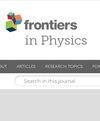利用 SOLEDGE3X-EIRENE 和 METIS 代码对 JT-60SA H 模式高辐射情景进行核心和边缘建模
IF 1.9
3区 物理与天体物理
Q2 PHYSICS, MULTIDISCIPLINARY
引用次数: 0
摘要
在第一阶段利用中,JT-60SA 将配备一个惯性冷却分流器,它可以在目标上承受 10 兆瓦/平方米的热负荷几秒钟,这比预定的放电持续时间短得多。因此,为了最大限度地延长放电持续时间,必须在等离子体边缘区域开发具有高辐射分数的运行方案,同时又不对方案性能造成不可接受的影响。在本研究中,使用 METIS 和 SOLEDGE3X-EIRENE 代码对 JT-60SA 中未掺杂和掺杂氖的氘 H 模式情景的核心和边缘条件进行了研究。目的是确定在哪些运行条件下,是否有可能使目标的热负荷大大低于 10 MW/m2,并有可能在保持良好的等离子体核心条件的同时,建立一个脱离岔流器的机制。在第一项分析中,对非种子方案的边缘参数空间进行了研究。在中等边缘功率(15 兆瓦)下进行的模拟表明,在没有杂质种子的情况下,目标处的热负荷在附着情况下高于 10 兆瓦/平方米,实现脱离具有挑战性,要求上游电子密度至少高于 4 × 1019 m-3。这表明,在机器投入使用的第一阶段需要注入杂质。因此,在将分离矩阵的上游电子密度保持在 3 × 1019 m-3 的情况下,进行了霓虹灯播种模拟,执行了播种率扫描和注入功率扫描。结果表明,在向边缘等离子体注入 15 兆瓦功率的情况下,注入氖后,内靶很容易脱离,热负荷也很低。然而,在外部目标处,即使边缘等离子体中的功率损耗等于穿过分离矩阵的功率的 50%,热通量也不会低于 10 MW/m2。因此,托卡马克在开发利用的第一阶段,放电时间超过几秒钟时,很可能需要在深度分离状态下运行。在堆芯-边缘综合建模框架内,利用 METIS 对最有趣的情况计算了堆芯辐射功率。本文章由计算机程序翻译,如有差异,请以英文原文为准。
Core and edge modeling of JT-60SA H-mode highly radiative scenarios using SOLEDGE3X–EIRENE and METIS codes
In its first phase of exploitation, JT-60SA will be equipped with an inertially cooled divertor, which can sustain heat loads of 10 MW/m2 on the targets for a few seconds, which is much shorter than the intended discharge duration. Therefore, in order to maximize the duration of discharges, it is crucial to develop operational scenarios with a high radiated fraction in the plasma edge region without unacceptably compromising the scenario performance. In this study, the core and edge conditions of unseeded and neon-seeded deuterium H-mode scenarios in JT-60SA were investigated using METIS and SOLEDGE3X–EIRENE codes. The aim was to determine whether, and under which operational conditions, it would be possible to achieve heat loads at the targets significantly lower than 10 MW/m2 and potentially establish a divertor-detached regime while keeping favorable plasma core conditions. In first analysis, an investigation of the edge parameter space of unseeded scenarios was carried out. Simulations at an intermediate edge power of 15 MW indicate that, without seeded impurities, the heat loads at the targets are higher than 10 MW/m2 in attached cases, and achieving detachment is challenging, requiring upstream electron densities at least above 4 × 1019 m−3 . This points toward the need for impurity injection during the first period of exploitation of the machine. Therefore, neon seeding simulations were carried out, performing a seeding rate scan and an injected power scan while keeping the upstream electron density at the separatrix at 3 × 1019 m−3 . They show that at 15 MW of power injected into the edge plasma, the inner target is easily detached and presents low heat loads when neon is injected. However, at the outer target, the heat fluxes are not lowered below 10 MW/m2 , even when the power losses in the edge plasma are equal to 50% of the power crossing the separatrix. Therefore, the tokamak will probably need to be operated in a deep detached regime in its first phase of exploitation for discharges longer than a few seconds. In the framework of core–edge integrated modeling, using METIS, the power radiated in the core was computed for the most interesting cases.
求助全文
通过发布文献求助,成功后即可免费获取论文全文。
去求助
来源期刊

Frontiers in Physics
Mathematics-Mathematical Physics
CiteScore
4.50
自引率
6.50%
发文量
1215
审稿时长
12 weeks
期刊介绍:
Frontiers in Physics publishes rigorously peer-reviewed research across the entire field, from experimental, to computational and theoretical physics. This multidisciplinary open-access journal is at the forefront of disseminating and communicating scientific knowledge and impactful discoveries to researchers, academics, engineers and the public worldwide.
 求助内容:
求助内容: 应助结果提醒方式:
应助结果提醒方式:


